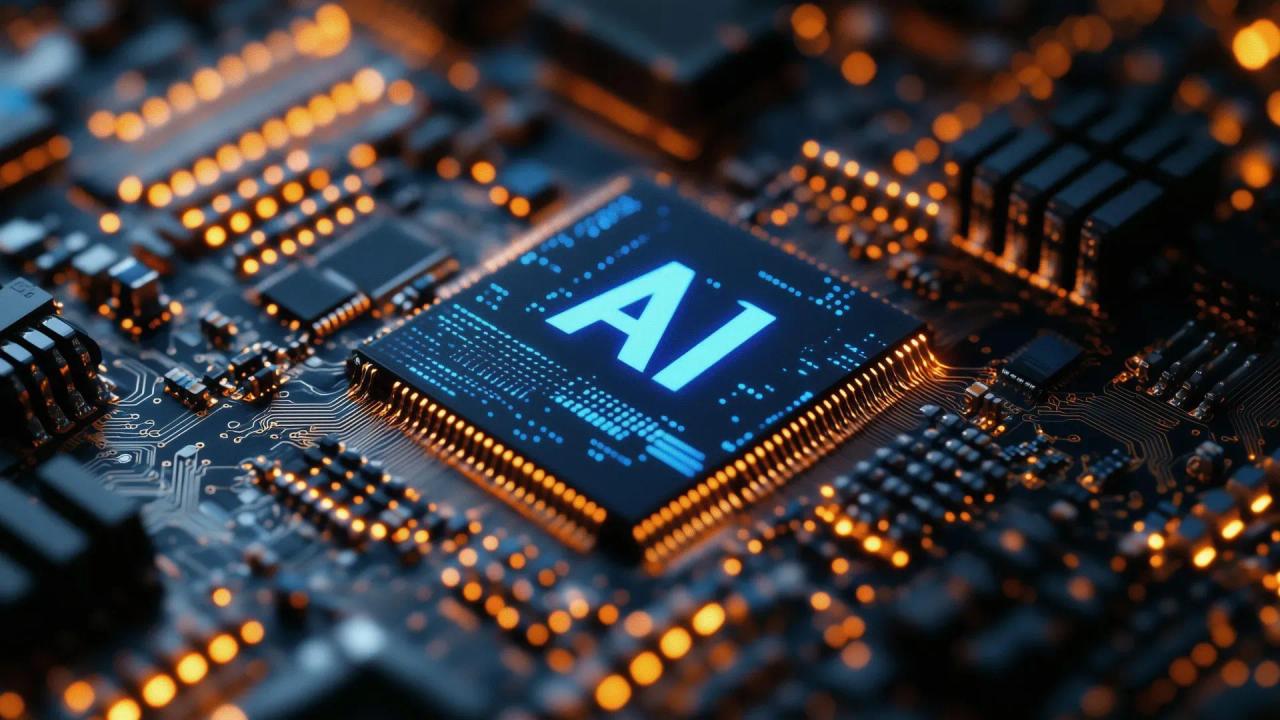KRISS Achieves Room-Temperature Skyrmion Control in 2D Materials, Paving the Way for Next-Gen AI and Quantum Computing
2 Sources
2 Sources
[1]
KRISS Paves the Way for Room-Temperature 2D Topolo | Newswise
Newswise -- The Korea Research Institute of Standards and Science (KRISS) has, for the first time in the world, generated and controlled skyrmions at room temperature in a two-dimensional (2D) materials. This achievement reduces power consumption compared to traditional three-dimensional (3D) systems while maximizing quantum effects, making it a core technology for the development of room-temperature quantum computers and AI semiconductors. A skyrmion is a spin structure arranged in a vortex shape, theoretically reducible to just a few nanometers and capable of moving with very low power. If skyrmions can be freely created and manipulated in reality, it would enable the development of next-generation devices with ultra-low power consumption and high performance. As such, research is being actively conducted in this field. While previous skyrmion applications have only been explored in 3D magnets, the first report of 2D magnets in 2017 broadened research to include 2D materials. The advantage of 2D over 3D lies in a smoother surface, akin to ice, which reduces friction (heat) and noise when operating skyrmions, allowing for stable operation with lower power consumption. In addition, skyrmions in 2D are smaller than those in 3D, enhancing quantum phenomena. KRISS succeeded in generating and controlling skyrmions in 2D magnets at room temperature. By applying a very fine voltage and magnetic field to the surface of the magnet, skyrmions were created and then driven in the desired direction with a current. The experimental results showed that the power consumption for controlling skyrmions in 2D was approximately 1/1000 of that in 3D, and their size was reduced by more than ten-fold, providing significant advantages in terms of stability and speed. Although room-temperature skyrmion Creation in 2D has been reported by the US and China at around the same time, KRISS is the first to succeed in both formation and electrical control. This success comes about a year after the research team developed a 3D skyrmion transistor last February, advancing the development of next-generation spintronic devices. Notably, this technology maximizes the quantum effects of skyrmions at room temperature. This in turn suggested the potential for realizing room-temperature qubits using skyrmions, thereby addressing some of the limitations of existing quantum computers that operate only in ultra-low temperature environments. Seungmo Yang, the Senior Research Scientist from the KRISS Quantum Magnetic Sensing Group said, "With the recent advances in AI, the demand for ultra-low power semiconductor devices is increasing. Our skyrmion control technology can contribute to the design of next-generation AI semiconductor devices." ### As a national metrology institute (NMI) of Korea founded in 1975, KRISS (Korea Research Institute of Standards and Science) has developed measurement standards technology and played a pivotal role in upgrading Korea's main industries to the global level. This research, supported by the Ministry of Science and ICT's Nano and Material Technology Development Project, was a collaborative effort involving the KRISS Quantum Technology Institute's Quantum Magnetic Sensing Group, Professor Kab-Jin Kim's research team at KAIST, Professor Changgu Lee's research team at Sungkyunkwan University, and Dr. Mi-Young Im from Lawrence Berkeley National Laboratory (LBNL). The results were published in the renowned journal Advanced Materials (IF: 29.4) last May.
[2]
Controlling skyrmions at room-temperature in 2D topological spin structure technology
The Korea Research Institute of Standards and Science (KRISS) has, for the first time in the world, generated and controlled skyrmions at room temperature in two-dimensional (2D) materials. This achievement reduces power consumption compared to traditional three-dimensional (3D) systems while maximizing quantum effects, making it a core technology for the development of room-temperature quantum computers and AI semiconductors. The study is published in the journal Advanced Materials. A skyrmion is a spin structure arranged in a vortex shape, theoretically reducible to just a few nanometers and capable of moving with very low power. If skyrmions could be freely created and manipulated in reality, it would enable the development of next-generation devices with ultra-low power consumption and high performance. As such, research is being actively conducted in this field. While previous skyrmion applications have only been explored in 3D magnets, the first report of 2D magnets in 2017 broadened research to include 2D materials. The advantage of 2D over 3D lies in a smoother surface, akin to ice, which reduces friction (heat) and noise when operating skyrmions, allowing for stable operation with lower power consumption. In addition, skyrmions in 2D are smaller than those in 3D, enhancing quantum phenomena. KRISS succeeded in generating and controlling skyrmions in 2D magnets at room temperature. By applying a very fine voltage and magnetic field to the surface of the magnet, skyrmions were created and then driven in the desired direction with a current. The experimental results showed that the power consumption for controlling skyrmions in 2D was approximately 1/1000 of that in 3D, and their size was reduced by more than ten-fold, providing significant advantages in terms of stability and speed. Although room-temperature skyrmion creation in 2D has been reported by the US and China at around the same time, KRISS is the first to succeed in both formation and electrical control. This success comes about a year after the research team developed a 3D skyrmion transistor last February, advancing the development of next-generation spintronic devices. Notably, this technology maximizes the quantum effects of skyrmions at room temperature. This in turn suggested the potential for realizing room-temperature qubits using skyrmions, thereby addressing some of the limitations of existing quantum computers that operate only in ultra-low temperature environments. Seungmo Yang, the Senior Research Scientist from the KRISS Quantum Magnetic Sensing Group said, "With the recent advances in AI, the demand for ultra-low power semiconductor devices is increasing. Our skyrmion control technology can contribute to the design of next-generation AI semiconductor devices."
Share
Share
Copy Link
The Korea Research Institute of Standards and Science (KRISS) has successfully generated and controlled skyrmions at room temperature in 2D materials, potentially revolutionizing AI semiconductors and quantum computing.

Breakthrough in Skyrmion Control at Room Temperature
In a groundbreaking development, the Korea Research Institute of Standards and Science (KRISS) has successfully generated and controlled skyrmions at room temperature in two-dimensional (2D) materials. This world-first achievement marks a significant leap forward in the field of quantum computing and AI semiconductor technology
1
2
.Understanding Skyrmions and Their Potential
Skyrmions are spin structures arranged in a vortex shape, theoretically reducible to just a few nanometers and capable of moving with very low power consumption. The ability to create and manipulate skyrmions could lead to the development of next-generation devices with ultra-low power consumption and high performance
1
2
.Advantages of 2D Over 3D Materials
While previous skyrmion applications were limited to 3D magnets, the discovery of 2D magnets in 2017 opened new avenues for research. 2D materials offer several advantages over their 3D counterparts:
- Smoother surface, reducing friction and noise
- Lower power consumption for stable operation
- Smaller skyrmion size, enhancing quantum phenomena
1
2
KRISS's Experimental Success
The KRISS team achieved a remarkable feat by:
- Generating skyrmions in 2D magnets at room temperature
- Controlling these skyrmions through fine voltage and magnetic field applications
- Driving skyrmions in desired directions using electrical current
1
2
Impressive Results and Comparisons
The experimental results demonstrated significant improvements over 3D systems:
- Power consumption reduced by approximately 1/1000
- Skyrmion size reduced by more than ten-fold
- Enhanced stability and speed
1
2
While room-temperature skyrmion creation in 2D has been reported by researchers in the US and China, KRISS is the first to succeed in both formation and electrical control
1
2
.Implications for Quantum Computing and AI
This breakthrough has far-reaching implications for the development of room-temperature quantum computers and AI semiconductors:
- Maximizes quantum effects of skyrmions at room temperature
- Suggests potential for room-temperature qubits using skyrmions
- Addresses limitations of existing quantum computers that operate only in ultra-low temperature environments
1
2
Related Stories
Future Applications and Industry Impact
Seungmo Yang, Senior Research Scientist from the KRISS Quantum Magnetic Sensing Group, highlighted the technology's potential impact on the AI industry: "With the recent advances in AI, the demand for ultra-low power semiconductor devices is increasing. Our skyrmion control technology can contribute to the design of next-generation AI semiconductor devices"
1
2
.Collaborative Effort and Research Support
This research was a collaborative effort involving:
- KRISS Quantum Technology Institute's Quantum Magnetic Sensing Group
- Professor Kab-Jin Kim's research team at KAIST
- Professor Changgu Lee's research team at Sungkyunkwan University
- Dr. Mi-Young Im from Lawrence Berkeley National Laboratory (LBNL)
The project was supported by the Ministry of Science and ICT's Nano and Material Technology Development Project
1
.Publication and Recognition
The groundbreaking results were published in the renowned journal Advanced Materials, which has an impact factor of 29.4, in May
1
.References
Summarized by
Navi
Related Stories
Korean Researchers Unveil Fine Structure of Magnons, Advancing Neuromorphic Device Development
14 Feb 2025•Science and Research

Breakthrough in Spintronics: Turning Spin Loss into Energy for Ultra-Low-Power AI Chips
25 Aug 2025•Technology

Voltage-Controlled Magnetism in Quantum Material Opens New Avenues for Neuromorphic Computing
17 Jan 2025•Science and Research

Recent Highlights
1
Google launches Gemini 3 Flash as default AI model, delivering speed with Pro-grade reasoning
Technology

2
OpenAI launches GPT Image 1.5 as AI image generator war with Google intensifies
Technology

3
OpenAI launches ChatGPT app store, opening doors for third-party developers to build AI-powered apps
Technology





